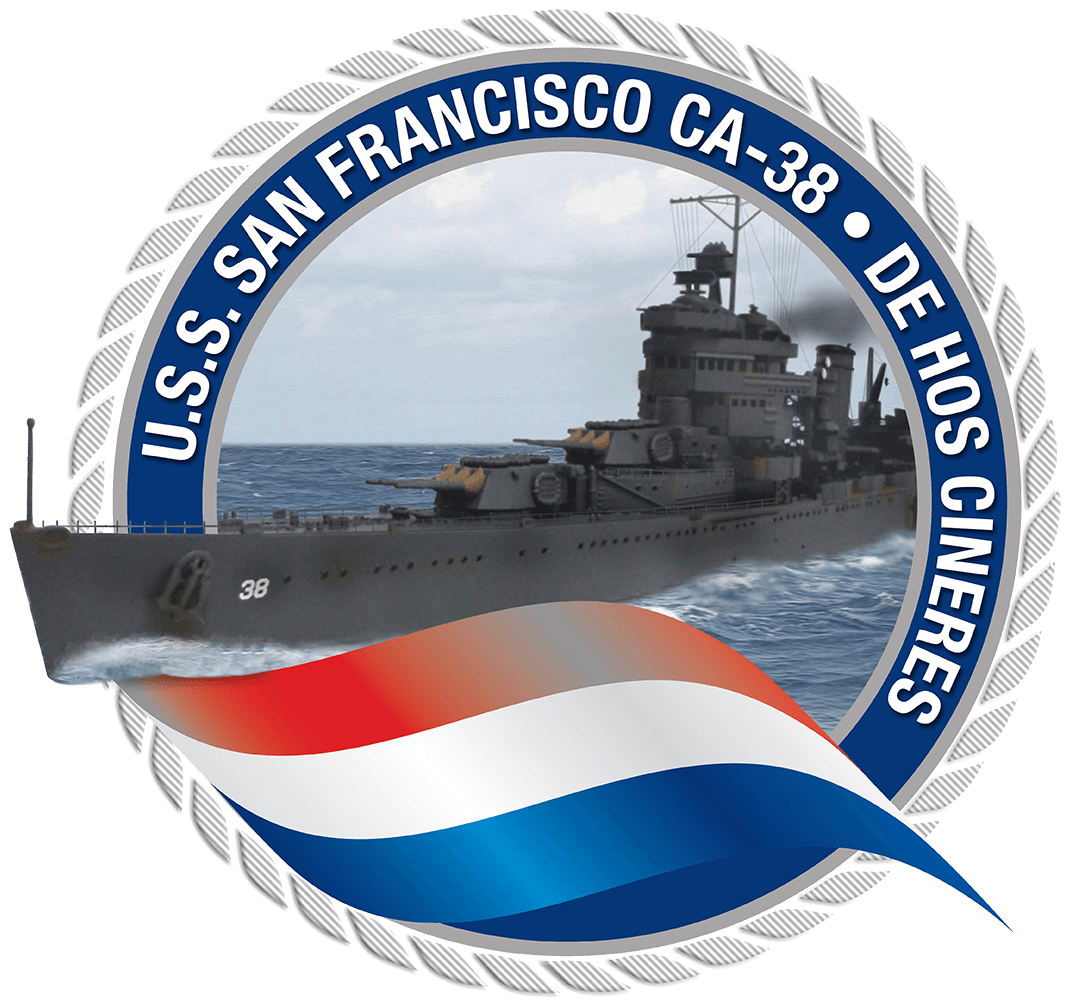Turning Point





On March 9, 1933 San Francisco’s namesake and the second heavy cruiser to be built at Mare Island slid down the building ways. Champagne was not available due to the Prohibition, so she was christened with water from the famed Hetch-Hetchy water system. The christening fluid was even rarer than champagne at the time because after 19 years and many bond issues none of it had yet reached San Francisco (nor would any until another year and half had passed). Approximately 25,000 people gathered on both sides of the channel to see the launch during those early days of the Depression. Few could have envisioned that ten years later the heavily damaged cruiser would limp back to Mare Island for repairs following a night-time engagement in one of the bloodiest and most decisive campaigns in the Pacific Theater during World War II. The campaign centered on an island that, at the time of her launch, few could find on a map or name, but by 1943 that name was a household word.
In early 1942 Allied intelligence identified that the Imperial Japanese Navy (IJN) had begun constructing a large airfield in the Solomon Islands on Guadalcanal. Should this base become operational, Japanese long-range bombers would threaten the critical sea lanes from the United States to Australia and New Zealand. U.S. Admiral Ernest King, Commander in Chief, United States Fleet, directed the invasion of Guadalcanal to deny the use of the airstrip by the Japanese. A six-month Guadalcanal campaign began on 7 August 1942, when Allied (primarily U.S.) forces landed on Guadalcanal, Tulagi, and the Florida Islands in the Solomon Island Group. The Japanese Imperial General Headquarters responded by assigning the Imperial Japanese Army’s 17th Army, with the task of retaking Guadalcanal. In addition, the IJN viewed Guadalcanal as the opportunity for a decisive naval engagement and orders were issued for their navy to converge on the island. The stage was set for one of the bloodiest campaigns of the war. That campaign remains legendary in US Marine history. Less well known is the price the US Navy paid in the campaign. The USS San Francisco was destined to play a significant role in the fight which ultimately resulted in naval casualties that were three times higher than the losses of the Marines and Army combined.
On the night of November 13, 1942, the USS San Francisco attacked a vastly superior Japanese force off the coast of Guadalcanal. It was the most brutal close-quarters naval engagement of World War II. The San Francisco took 45 direct hits and sustained heavy damage while sinking one Japanese ship and seriously damaging two others (including a battleship). With half her crew killed or wounded the remaining crew members performed valiantly as they tended to the casualties and performed damage control. Through their efforts the USS San Francisco survived to fight another day. One hundred and six sailors, including Rear Admiral Daniel Callaghan, were killed and 131 more wounded in what Fleet Admiral Ernest J. King called “…the most furious sea battle fought in history.”
The San Francisco was sent back to Mare Island for repairs. By the end of the seven naval battles in the Guadalcanal campaign over 5,000 Americans would be killed at sea, and the battleground became so littered with men and sunken combatants that it was referred to as “Iron Bottom Sound.” To this day you can visit a memorial featuring the battle-scarred bridge of the USS San Francisco at Lands’ End in the city of San Francisco. The ships bell, that was originally part of the monument is now on display in the lobby of the Marine Memorial Club on Sutter Street in San Francisco.
Due to COVID-19 the museum is closed for now, but when this pandemic is history come visit Mare Island’s newest monument to the workers and sailors who won the Cold War, the historic Alden Park, St. Peter’s Chapel, Naval Officers Mansions and the Mare Island Museum. On this first United States (US) Naval base on the Pacific Coast, you will be treated to one of the largest non-federal collections of official US Navy artifacts anywhere. Artifacts range from an anchor lost by the HMS CENTURION after her horrific voyage around Cape Horne in 1739, cannons captured in 1871 during a punitive expedition against the Kingdom of Joseon in Korea by the US Asiatic Squadron, to the control room of a Cold War era submarine constructed with actual components from Vallejo’s namesake, the nuclear-powered ballistic missile submarine MARIANO G. VALLEJO (SSBN 658). Stop by and check us out. We are located at 1100 Railroad Avenue on Mare Island in Vallejo and across the street from historic dry dock 1 (completed construction in 1891). Open from 10 a.m. to 2 p.m. on weekdays and from 10 a.m. to 4 p.m. every Saturday.
